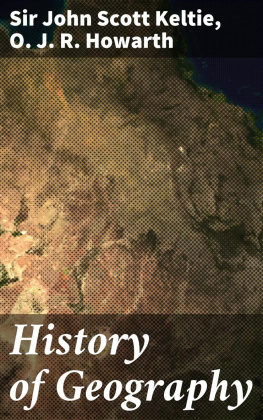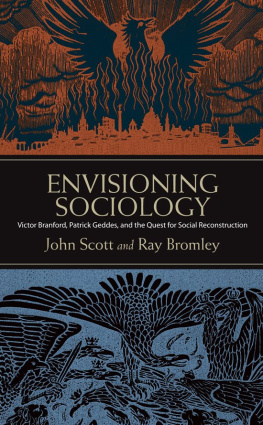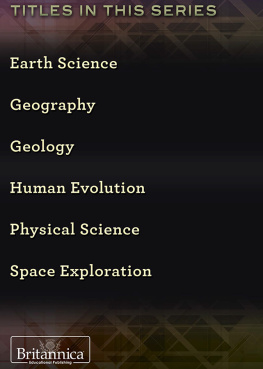Chapter I.
BEGINNINGS
Table of Contents
We need not attempt any elaborate definition of Geography at this stage; it is hoped that a fairly clear idea of its field and functions may arise during the following brief summary of its history and evolution. The old-fashioned definition, A description of the earth, is serviceable enough if accepted in its widest sense. Geography may be regarded as the mother of the sciences. Whatever was the origin of man, whether single or multiple, and wherever he emerged into manhood, he was a wanderer, an explorer, from the first. Necessity compelled him to make himself familiar with his environment and its resources, and as the race multiplied emigration became compulsory. The more that relics of primitive humanity are brought to light, the further back must mans earliest wanderings be dated. The five thousand years of the old Biblical chronology must be multiplied a hundred times, and still we find that half a million years ago our primitive forefathers must have travelled far from the cradle of the race. They were unconscious geographers. Their conceptions of the earth and of its place in the universe are unknown to us; it is not impossible to infer something of them by analogy of ideas existing to-day among more or less primitive peoples, though to do so is beyond our present scope. Yet it may be said that certain root-ideas of geographical theory and practice must surely date from the earliest period of mans capacity for observation. Thus the necessity for describing or following a particular direction presupposes the establishment of a definite standardthe face would be turned towards the position of some familiar object; then in that direction and the opposite, and to the right hand and the left, four such standards would be found, and would become the cardinal points. The value, for this purpose, of so patent a phenomenon as the rising and setting of the sun must have been impressed upon human intelligence at an elementary stage. Again, map-making is not very far removed from a primitive instinct. Modern travellers have described attempts at cartography by the North American Indians, the Eskimo, and the Maori and other less advanced inhabitants of the Pacific Islands.

Fig. 1.Tahitian map.
It is again beyond the scope of the present summary of the development of geographical knowledge among European peoples to attempt to give any detailed history of exploration; it is only possible to deal with the salient episodes, and these mainly in so far as they have influenced mans general conception of the earth. Nevertheless, ages before the existence of any documentary evidence of its development geographical knowledge must have advanced far in other lands. America was discovered probably thousands of years before Columbus stumbled against the New World, or even the Norsemen had set foot in Vineland; it had time, before the Spaniards swarmed over it, to become the seat of civilizations whose origin is far beyond knowledge. It is worth noticing for our particular purpose that the European conquerors found evidence of highly developed geographical methods both in Central America and in Peru; the native maps were intelligible to them, and the Peruvian Incas had even evolved the idea of relief maps. China, again, a great power in early ages, possessed knowledge of much of central Asia; India was the seat of powerful States and of a certain civilization; Babylonia and Egypt were working out their destinies, and had their own conceptions of the earth and the universe, long before the starting-point of the detailed investigation within our present view.
But the names of Babylonia and Egypt bring us nearer to that starting-point. The history of Europe dawns in the eastern Mediterranean, and so does the history of geography. It has, however, to be premised that connection existed, in very early times, between the eastern Mediterranean circle and the lands far beyond. When princes of Iranian stock (to cite a single illustration) are found established on the confines of the Levant as early as the fifteenth century B.C. , it may be realized that the known radius from the Mediterranean centre was no short one. Much earlier than thiseven in the fourth millennium B.C. astronomy, a science of the closest affinity to geography, was well organized in Babylonia, and there is evidence for a cadastral survey there. Clay tablets dating from more than two thousand years B.C. show the work of the Babylonian surveyors.
The Egyptians worked along similar lines. Examples of their map-work include a plan, in the museum at Cairo, showing the basin of the lake Mris, with its canal and the position of towns on its borders, together with notes giving information about these places; and, in Turin, a map of the Wadi Alaiki, where the Nubian goldmines were situated; and this map may date from the earlier half of the fourteenth century B.C.
Meanwhile, in the gean lands and from Sicily to Cyprus, at points principally but not invariably insular or coastal, and especially in Crete, communities grew up that developed a high standard of civilization, to which the general name of gean is given. It appears that a central power became established in Crete about the middle of the third millennium B.C. , and that an active oversea trade was developed in the gean and the eastern Mediterranean during the ensuing thousand years. As for the knowledge of the mainland which came to be called Europe, it is suggested that the gean civilization was assailed, about the fifteenth century B.C. , by invaders from the north, and was practically submerged, probably by a similar movement, five hundred years later; and invasion presupposes intercourse.
The Phnicians, next taking the lead in Mediterranean maritime trade, must have extended knowledge of the inhabited world, even though they left the reputation of secretiveness in respect of their excursions (a natural and not uncommon characteristic of pioneer traders). A Semitic people, they seem to have emigrated from the Persian Gulf in detachments, and established independent settlements on the Levantine littoral. Tyre was their chief trading city. They provided the commercial link between east and west. Their penetration of the western Mediterranean and even of the Straits of Gibraltar is assigned to the earliest period of their activities. They established relations not only with the Greeks and other Mediterranean peoples, but also with central European traders; they are said, for example, to have dealt in amber brought from the Baltic overland to the Adriatic and to the mouth of the Rhone. They founded colonies in Cyprus, Sicily, and elsewhere as far as the west of Spain, where Gades (Cadiz) was established perhaps about 1100 B.C. Thence they carried their enterprises far to the north. If they did not actually exploit the tin of Cornwall, they probably knew of Britain. One of the greatest enterprises of antiquity, if we may trust Herodotus, who was, however, sceptical, was conducted by Phnician navigators under the auspices of Necho, king of Egypt, about 600 B.C. Even before this they brought from distant lands, it may be the Malay peninsula or it may be what is now Rhodesia, gold and other presents for King Solomon. If the Phnicians had really found their way as far as the Zambezi and the country on the south, they may well have conjectured that it would be possible to sail round Africa. At any rate, if the story as told by Herodotus is true, Necho was convinced that Africa could be circumnavigated. The Phnician navigators sailed down the Red Sea, and in autumn landed on the coast and sowed a crop of wheat; when this was reaped, they started again and made their way south round the Cape of Good Hope, and so northward, entering the Mediterranean in the third year. At one part of their course they had the sun on their right, which would be natural, though Herodotus regarded this as evidence of the incredibility of the narrative. There is no inherent impossibility in such an expedition, but it led to no direct results; no further effort was made to round the continent for twenty centuries.














